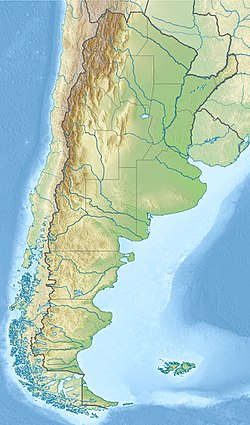Top Qs
Timeline
Chat
Perspective
Tupungato
Mountain in Argentina From Wikipedia, the free encyclopedia
Remove ads
Tupungato, one of the highest mountains in the Americas, is a massive Andean lava dome dating to Pleistocene times.[2] It lies on the Argentina–Chile border, between the Chilean Metropolitan Region (near a major international highway about 80 km or 50 mi east of Santiago) and the Argentine province of Mendoza, about 100 km (60 mi) south of Aconcagua, the highest peak of both the Southern and Western hemispheres. Immediately to its southwest is the active Tupungatito volcano (literally, little Tupungato), which last erupted in 1987.
Tupungato Department, an important Argentine wine-producing region in Mendoza province, is named for the volcano. Recent Chilean mapping indicates it has a summit elevation of 6635 m.[4]
Remove ads
1947 plane crash
On 2 August 1947, the airliner Star Dust, an Avro Lancastrian carrying six passengers and five crew over the Andes range, crashed into a steep glacier high on the Argentine side of Tupungato. The plane was quickly buried in the resulting avalanche and heavy snowfall that was taking place at the time. The plane lay undetected deep beneath the snow and glacial ice for over 50 years. Its remnants finally re-emerged at the glacier terminus in 2000. Shortly thereafter, an Argentine army expedition discovered the scattered debris and wreckage, collecting some of the evidence for investigation.


Remove ads
See also
Notes
- The given elevation of 6,570 m (21,560 ft) comes from Chilean 1:50.000 topographic mapping and is in accordance with SRTM data; the frequently given elevation of 6,800 m (22,300 ft) is incorrect.
References
External links
Wikiwand - on
Seamless Wikipedia browsing. On steroids.
Remove ads


